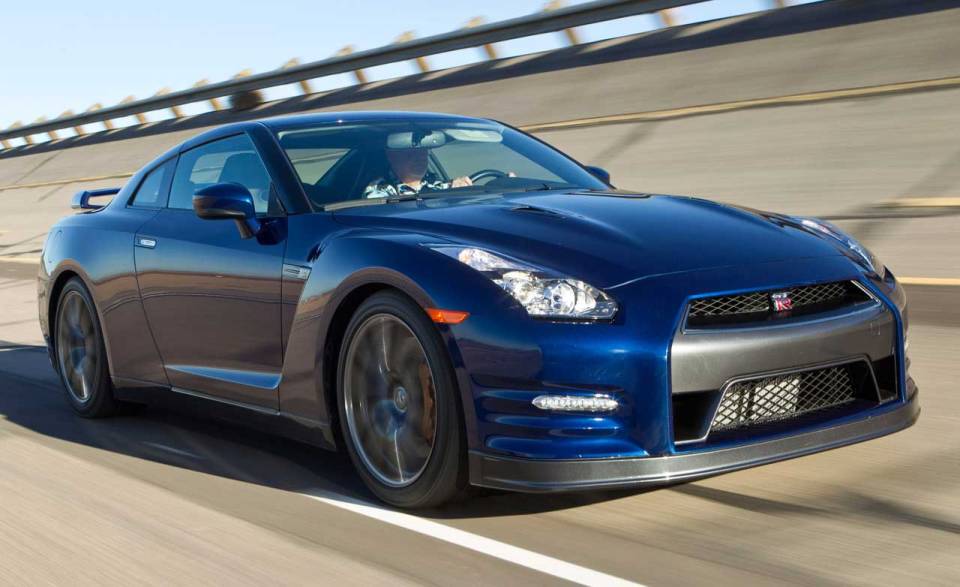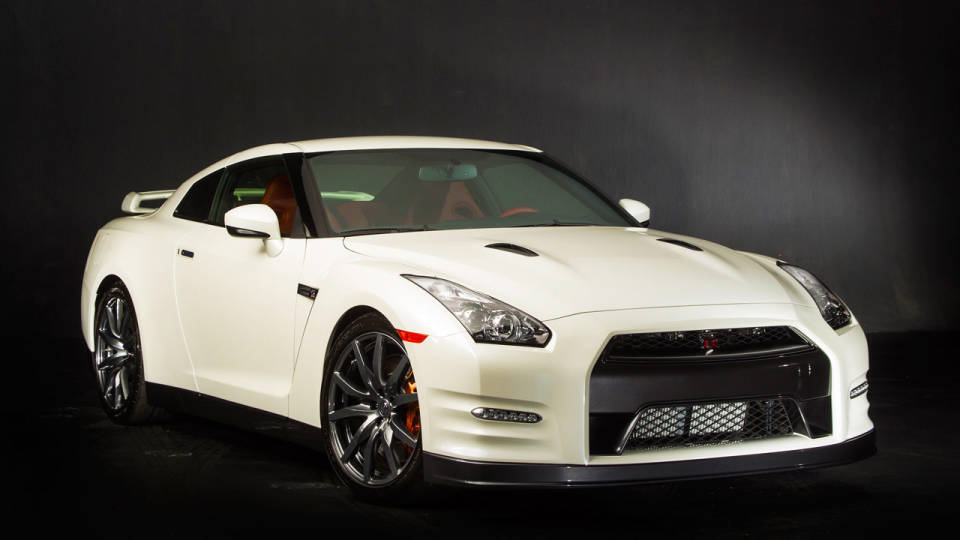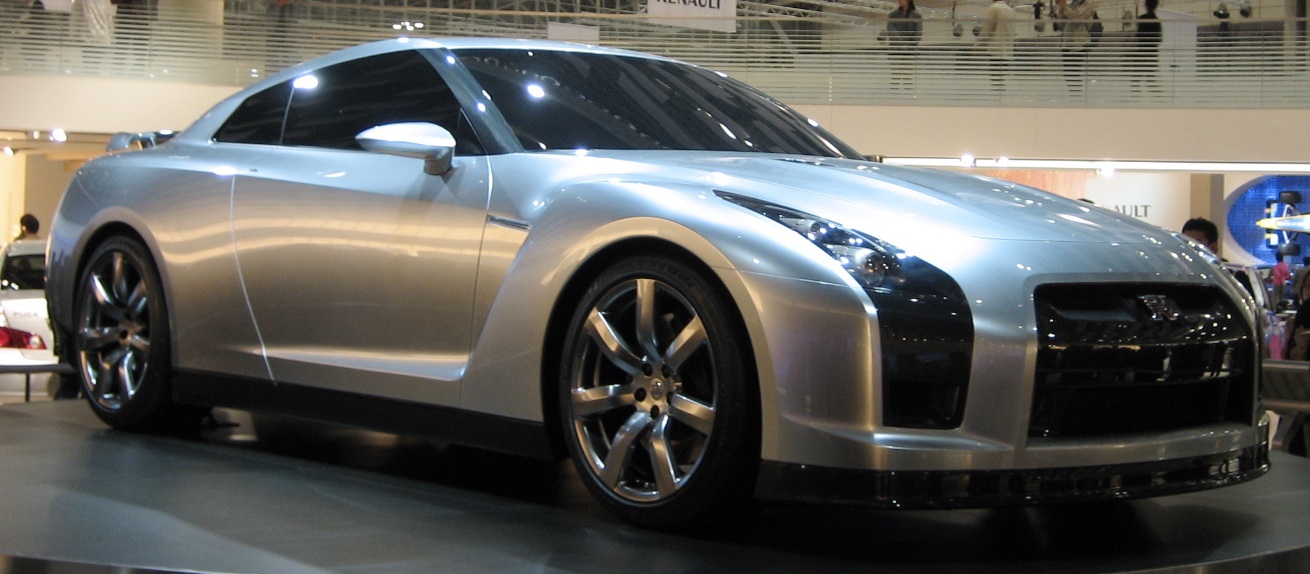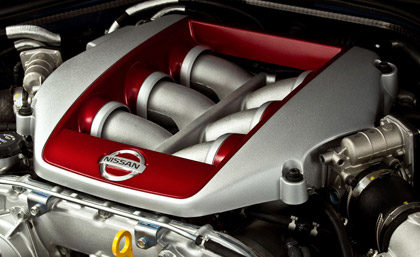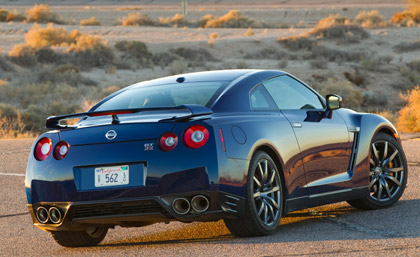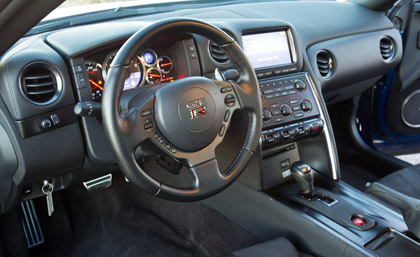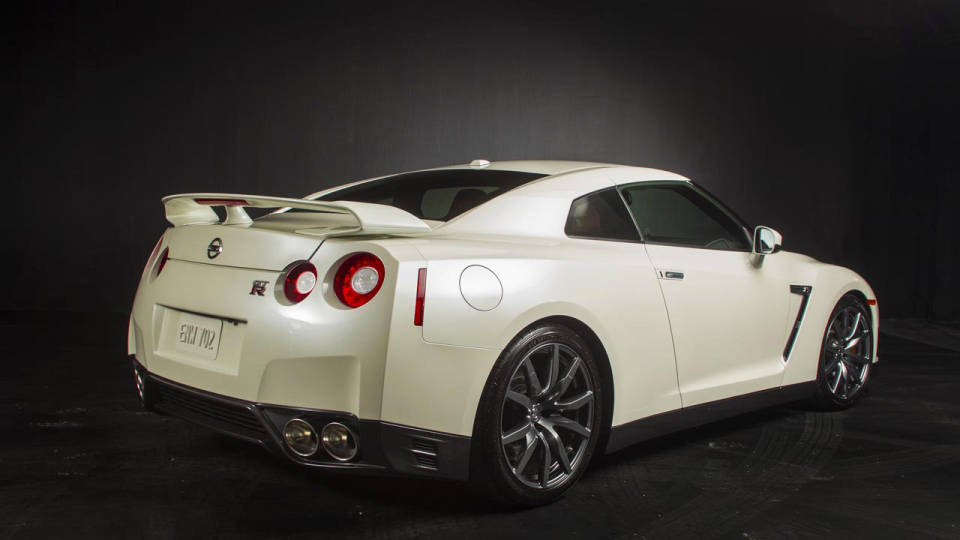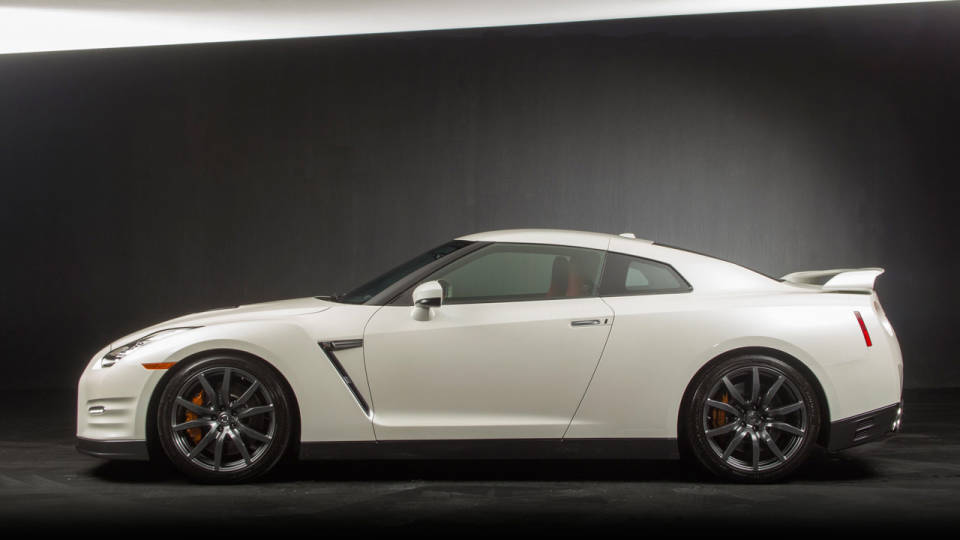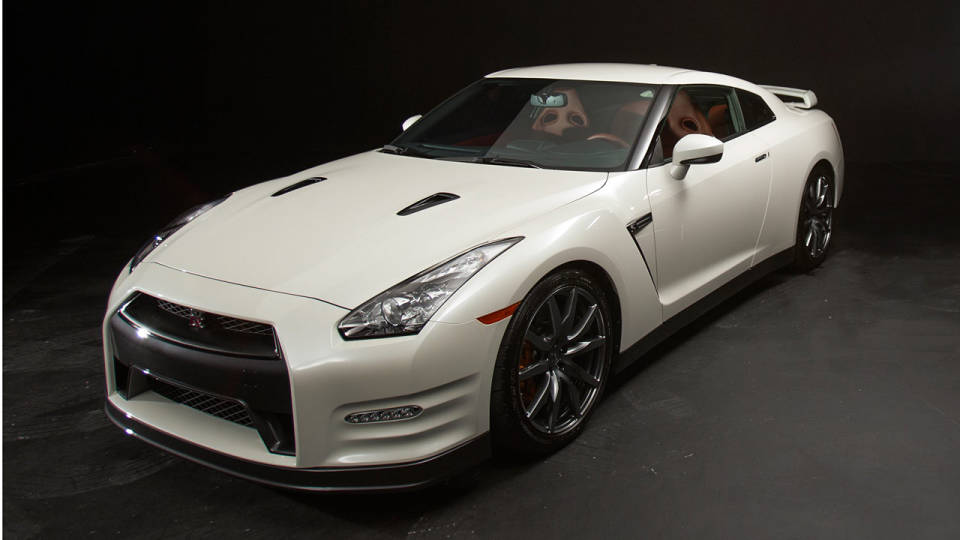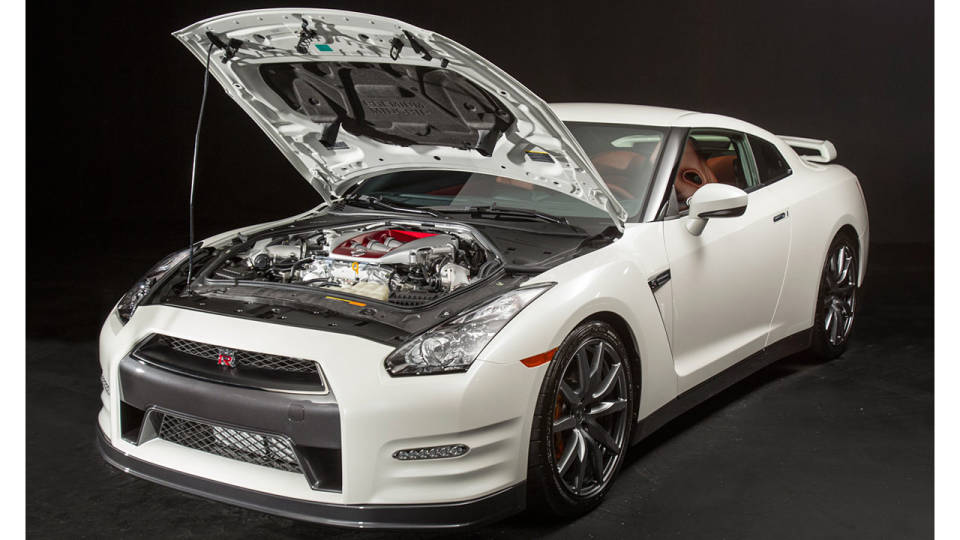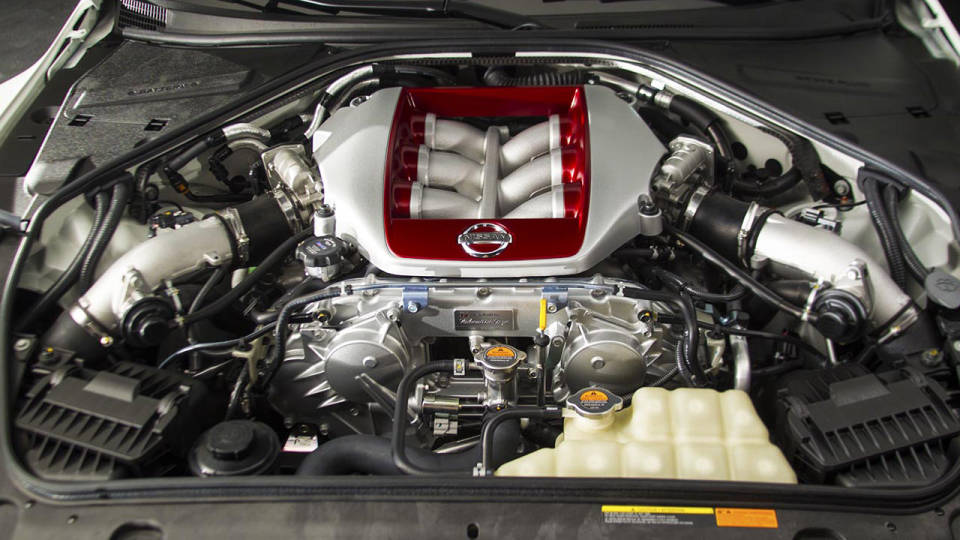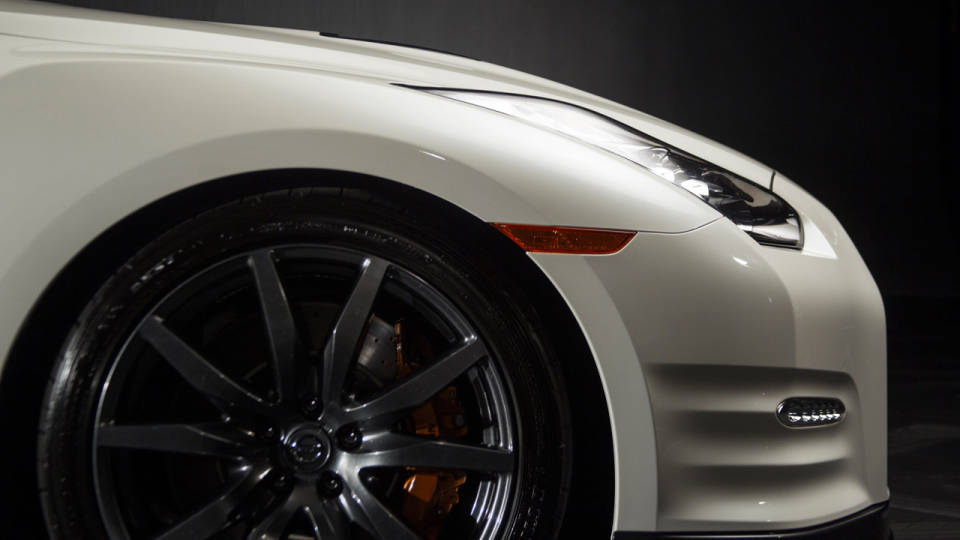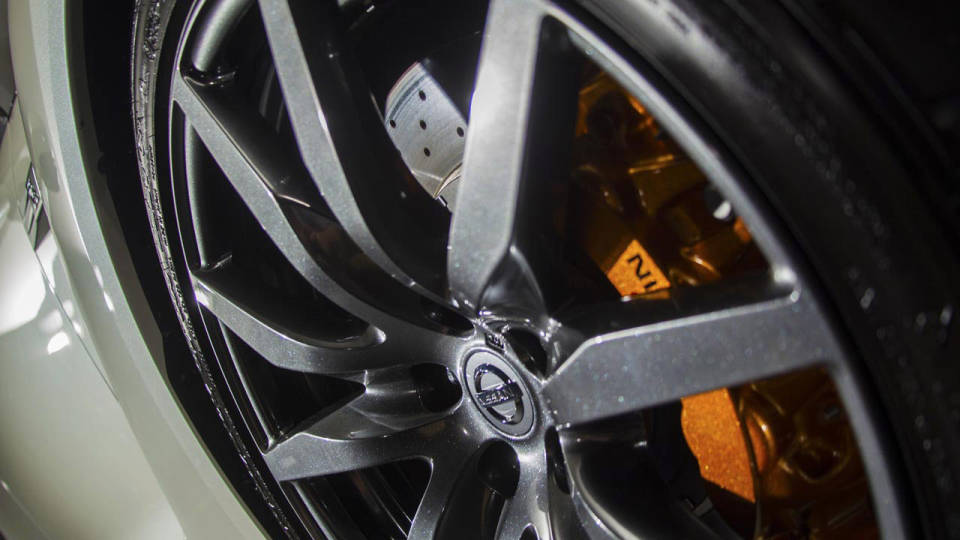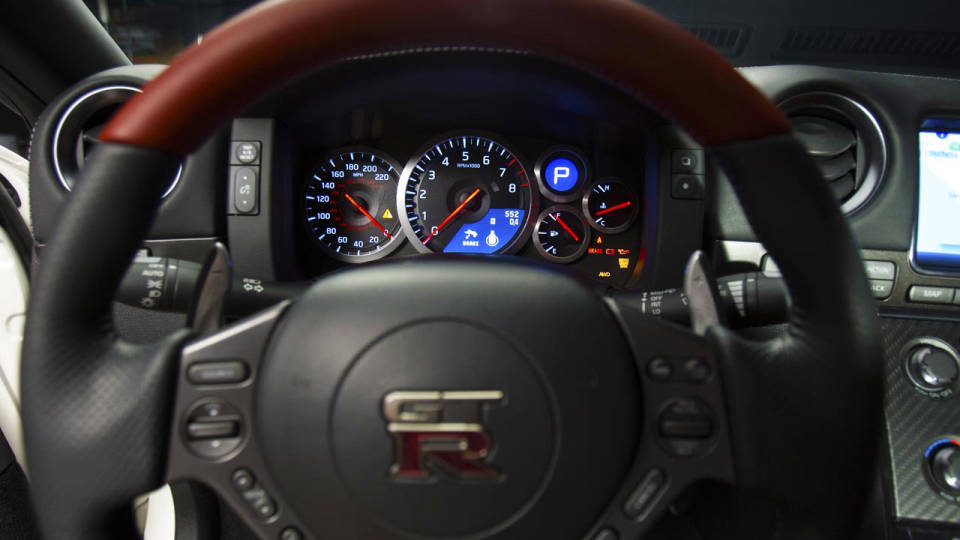Three years. Those were the words Kazutoshi Mizuno kept saying when the original R35 GT-R was introduced in 2008 (as a 2009 model). He told us then that while he was happy with how the car turned out, we would see its real potential in three years. Well, three years have passed, and true to his word, Mizuno-san brought along a new revitalized 2012 GT-R to the States, one with a significant power increase and more refined manners.
Under the new GT-R’s hood is the same VR38DETT 3.8-liter twin-turbocharged V-6 as before, but output has been increased from 485 bhp to a whopping 530 bhp, while torque gets raised from 434 lb.-ft. to 448. Mizuno attained these new figures by elevating boost pressure of the turbocharger from 0.75 bar to 0.90 bar, tweaking the engine's valve-timing system and altering the air/fuel ratio. He also improved breathing by enlarging the inlet pipe diameter and a section of exhaust pipe.
These changes are all evident upon flooring the throttle pedal for the first time. The first thing you notice is the sound: a decidedly more sinister growl emanates from within the engine compartment. Then you feel the g forces pressing you into the seat as the car snaps off the line. Part of the credit here goes to the gearbox's VDC-R mode, which has been modified to provide ideal launches without putting unnecessary stress on the transmission. Depress both the brake pedal and throttle pedal simultaneously, then let off the brakes—the new 2012 GT-R snaps off the line at an ideal 4000 rpm. Once under way, you seem to enter warp speed, as the 3965-lb. car hits 60 mph in 2.85 seconds, a figure we round up to 2.9. The quarter-mile mark comes and goes in a phenomenal 11.1 seconds...this is drag-car country.
The extra power isn't the only thing responsible for the car's enhanced acceleration; the new GT-R's aerodynamics are also significantly improved. The coefficient of drag has been improved from 0.27 to 0.26, meaning the GT-R now slices through the air with less resistance. What's more amazing is this: The car also has 10 percent more downforce. Mizuno-san worked this magic by cleverly routing more air to the sides of the car instead of over the top. Also, airflow has been increased to the radiator and front brakes via a larger grille and vents. The aerodynamic improvements, combined with those to the engine, have resulted in improved fuel economy figures of 16/23 city/highway. (The previous GT-R was rated at 15/21.)
Sharper Handling Responses and Better Ride Quality
Improvements to the new GT-R's chassis can be felt when simply cruising on the freeway. With the VDC in Comfort mode, the 2012 GT-R exhibits a smoother ride than its predecessor, noticeable especially when driving over harsh road irregularities. Mizuno made subtle changes to the suspension, which now features aluminum-piston shock absorbers and a carbon-composite strut bar in the engine bay. The special Bilstein DampTronic adjustable shocks monitor multiple vehicle information systems to provide appropriate damping forces for a variety of driving situations. Changes were made to the front and rear caster settings for the Dunlop SP Sport Maxx GT tires, the only tires available for the new GT-R. The biggest change to the car's drivability on the track was a considerable improvement in steering feel and precision.
The GT-R's electronically controlled ATTESA E-TS all-wheel-drive system has been left alone for 2012. The rear-biased system varies the torque split from 0/100 to 50/50 depending on speed, lateral acceleration, steering angle, tire slip, road surface and yaw rate. Of note is a special GT-R-specific yaw-rate feedback control, which measures the differences between the target yaw rate (calculated from steering angle) and actual yaw rate (detected by the yaw-rate sensor and g sensor) to adjust torque bias. Around the skidpad, the new GT-R registered an even 1.00g while dancing through the slalom at 75.4 mph.
Stopping power is again provided by Brembo monoblock 6-piston front and 4-piston rear brakes. Enlarged front rotors (15.4-in. versus last year's 15.0s) team with 15.0-in. rears, both two-piece full-floating (and cross-drilled) designs with low-steel high-stiffness brake pads. The calipers utilize racing-style radial mounting to minimize caliper flex during extreme braking. The GT-R stops exceptionally well, coming to a complete halt from 60 mph and 80 mph in 114 ft. and 189 ft., respectively.
The careful eye will noticed subtle changes to the 2012 GT-R's exterior and interior. These include new lights on the front air dam and the aforementioned larger grille. The rear also has small vents in the bumper.
In Japan, Nissan is introducing an interesting new program for GT-R customers where owners of 2009, 2010 and 2011 GT-Rs can get their cars upgraded to 2012 specs...sort of like upgrading the operating system of your PC from Vista to Windows 7. It'll be interesting how many takers there are for this program, and if it will make it to the U.S.; prices vary depending on your car and which upgrades you choose.
As for those who want to order a new 2012 GT-R, the car will reach dealer showrooms in February in two trim levels. The base Premium edition will be priced at $89,950, while the Black Edition, with unique seat trim, colors and wheels, will retail at $95,100. Get in line now if you consider value to be a priority for supercar performance...but then again, you can wait another three years to see what Mizuno-san will do next.
